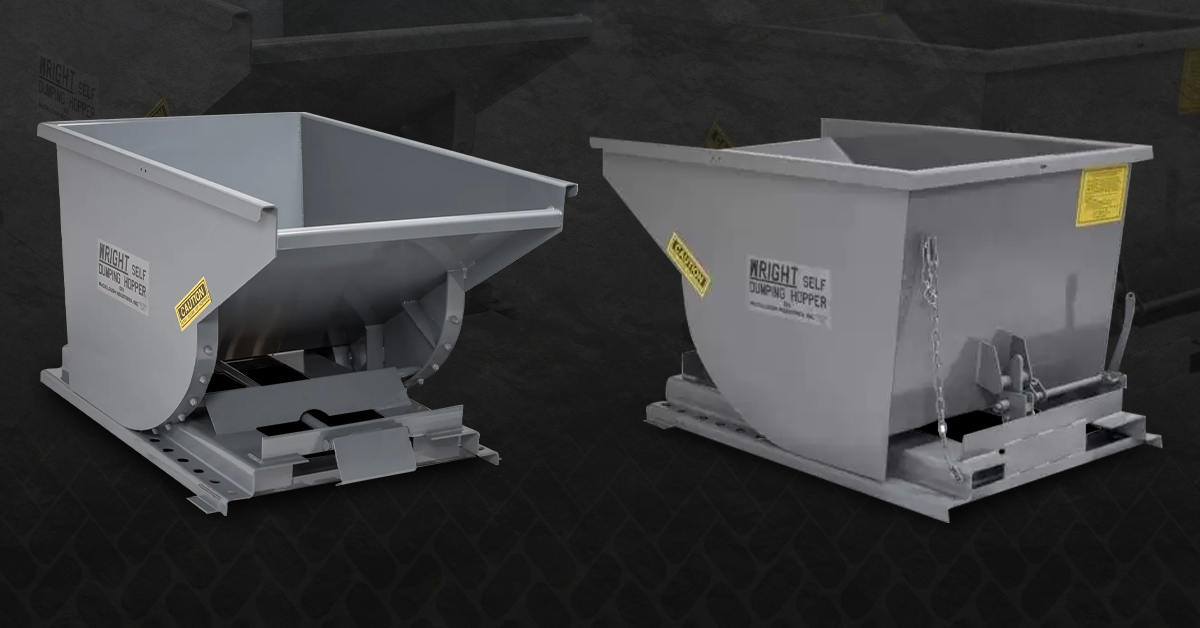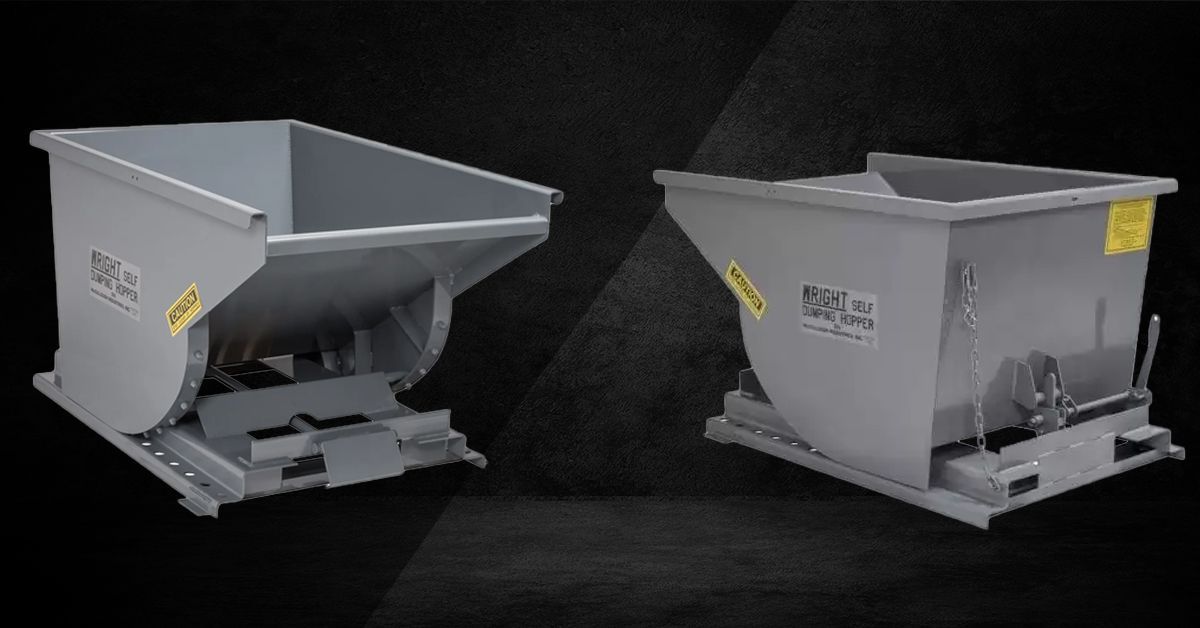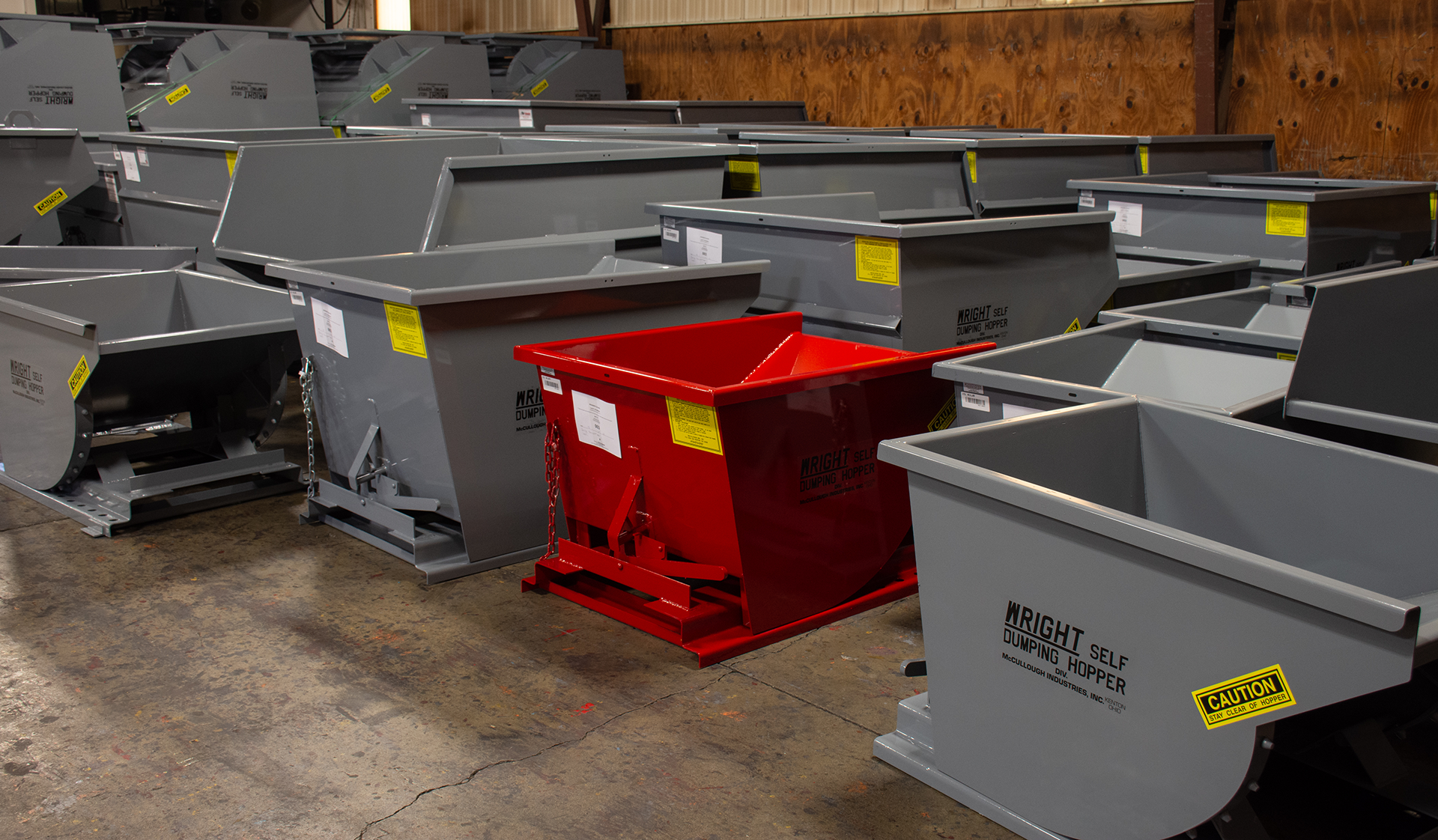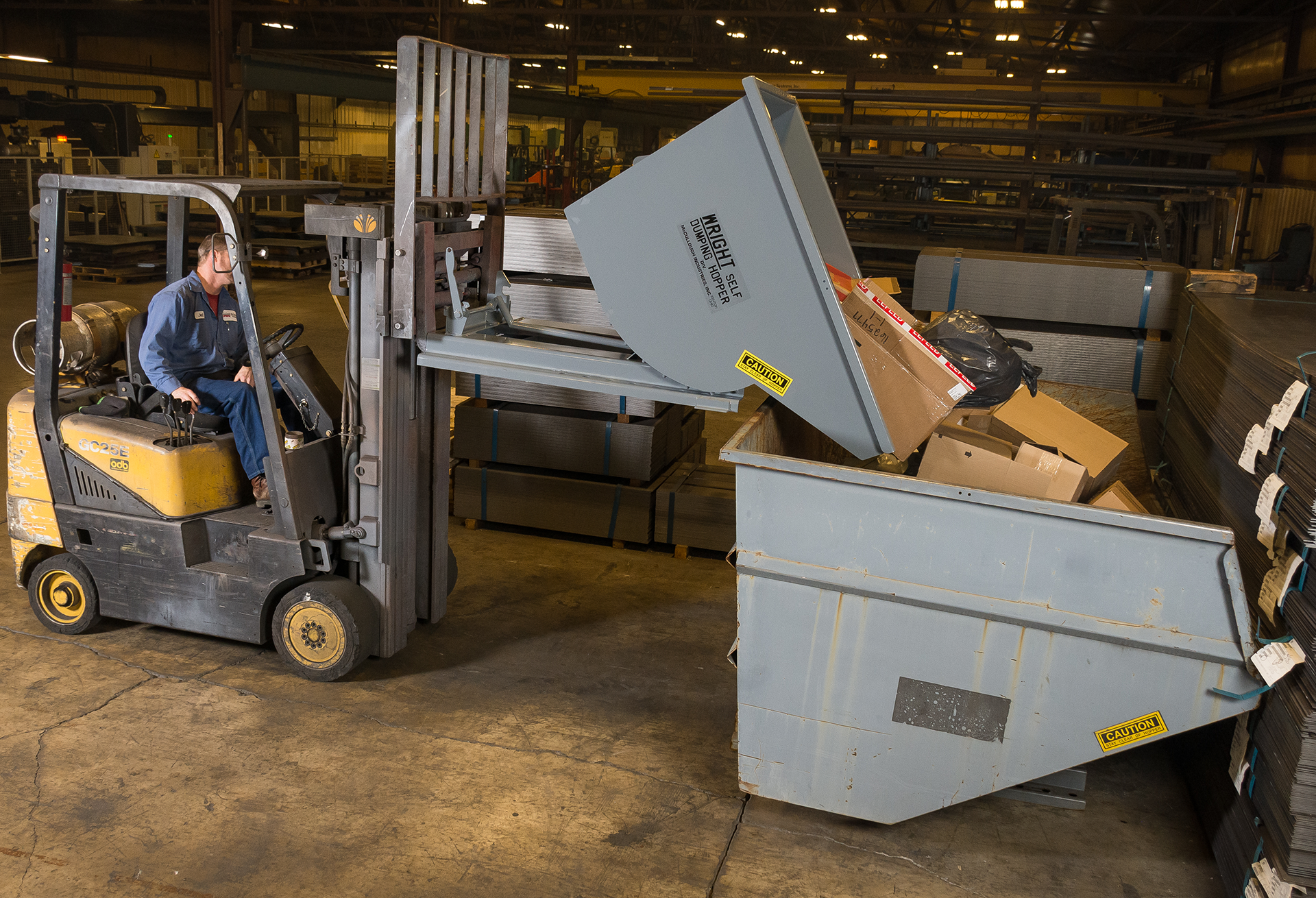
Material handling in industrial environments requires solutions that improve speed, reduce risk, and simplify operation. One of the most practical advancements in hopper design is the bump release mechanism a system engineered to dump automatically on contact with a roll-off container. For operations seeking greater safety and efficiency, the bump release hopper provides a reliable, low-intervention solution.
McCullough Industries manufactures a full line of bump release self-dumping hoppers with features tailored to rugged applications and high-throughput environments. In this article, we explore what makes a bump release hopper effective, how it works, and when it's the right choice for your operation.
What Is a Bump Release Hopper?
A bump release hopper is a variation of a self-dumping hopper designed to dump automatically when it makes contact with the edge of a roll-off or receiving container. Rather than relying on a manual trip or external release, the hopper uses a spring-loaded bump plate to trigger the release mechanism. This initiates a forward rotation, emptying the contents safely and completely.
After the material is dumped, the hopper self-rights to an upright, locked position. This automatic reset makes the unit immediately ready for reloading without requiring the operator to dismount or manually reset the hopper. It is a simple but highly efficient upgrade to standard manual release designs.
How the Bump Release Mechanism Works
The bump release mechanism is based on a mechanical latch and trigger system. The hopper remains locked in its upright position until the bump plate on the front edge makes contact with a solid surface typically the edge of a roll-off or larger container.
When contact is made, the pressure from the bump plate releases the latch. The hopper then rotates forward using gravity and the load's weight to guide the material out. Once emptied, a spring-loaded hinge and center of gravity alignment return the hopper to a stable, upright position.
This process removes the need for remote releases, chains, or onboard controls. It reduces operator steps, enhances unloading speed, and improves safety by minimizing the need for the forklift driver to interact directly with the hopper.
Ideal Scenarios for Bump Release Hopper Use
The bump release hopper excels in environments where time, operator access, or safety are key considerations. Typical applications include:
- High-volume material transfer to roll-off containers
- Outdoor or open-yard facilities where remote releases are impractical
- Environments where reducing operator dismounts is a priority
- Operations requiring hands-free dumping to maintain speed and flow
- Any setting where minimizing points of manual contact improves safety protocols
These hoppers are widely used in metal scrap yards, recycling centers, demolition support sites, and manufacturing facilities with repetitive dumping tasks.
Safety Advantages of Bump Release Hoppers
Reducing manual contact is one of the key safety benefits of using a bump release hopper. Traditional self-dumping hoppers often require a chain release or a trip handle, which can increase the risk of strain injuries or misfires if not properly engaged.
With a bump release design, the operator stays on the forklift. There's no need to leave the cab to initiate dumping or reset the unit. This limits unnecessary movement in busy zones and reduces exposure to trip hazards or moving equipment.
The automatic reset also contributes to safer workflows. Once the load is released, the hopper locks into an upright position, avoiding accidental tipping or instability between dumps.
Efficiency Gains in High Volume Environments
Efficiency isn’t just about speed it’s about consistency and repeatability. In operations that handle large volumes of material every hour, reducing manual steps has a compound benefit over time.
Bump release hoppers are well suited for repetitive cycles where operators need to stay mobile and productive. Because they reset automatically, there's no need to stop and check or reposition the hopper after each dump. This keeps forklift traffic moving and allows operators to complete more loads in less time.
When combined with a well-positioned roll-off container or dock, the workflow becomes seamless. Operators lift, position, make contact, and return, no chains, no latches, no delay.
Design and Build Features
McCullough Industries bump release hoppers are built with the same attention to strength and durability as our standard GEN II line. Key design elements include:
- Heavy-gauge steel walls and base options up to 1/4 inch
- Formed edge lips and extended sides to reduce spillage
- Continuous welding for leak resistance
- Reinforced bump plate and trigger mechanism
- Center-balanced design for stable dumping and automatic reset
Optional features like polyurethane or steel casters, sealed seams, and powder-coated finishes are also available to further match specific operational needs.
Why Choose a Bump Release Hopper from McCullough Industries?
With more than 60 years of experience manufacturing heavy duty material handling equipment, McCullough Industries understands the operational demands of industrial workspaces. Our bump release hoppers are engineered for simplicity and built for reliability.
We offer multiple capacity options ranging from 0.33 yd³ up to 3 yd³, with varying wall and base thicknesses to suit your material type and load volume. Each unit is tested to ensure smooth dumping, consistent reset action, and long-term structural integrity.
Customers across industries trust our hoppers to keep operations safe, fast, and productive and the bump release model is one of the most efficient tools in that lineup.
Find the Right Solution for Your Operation
If you’re looking to improve material dumping processes without adding complexity or risk, the bump release hopper may be the answer. It streamlines workflows, supports operator safety, and requires virtually no training to use.
Contact McCullough Industries
to learn more about available models, specifications, and custom options. We’ll help you identify the best hopper for your material type, facility layout, and daily cycle volume.







